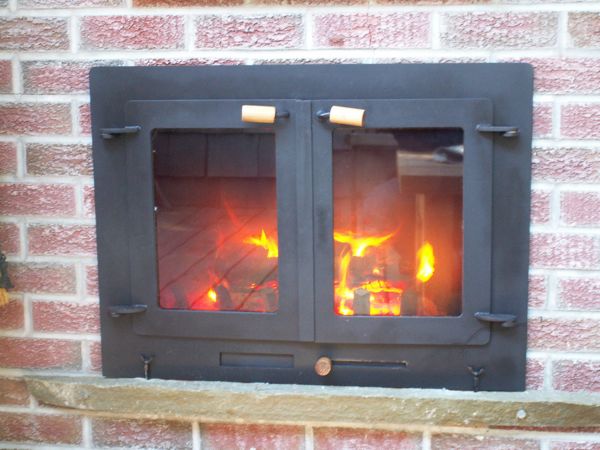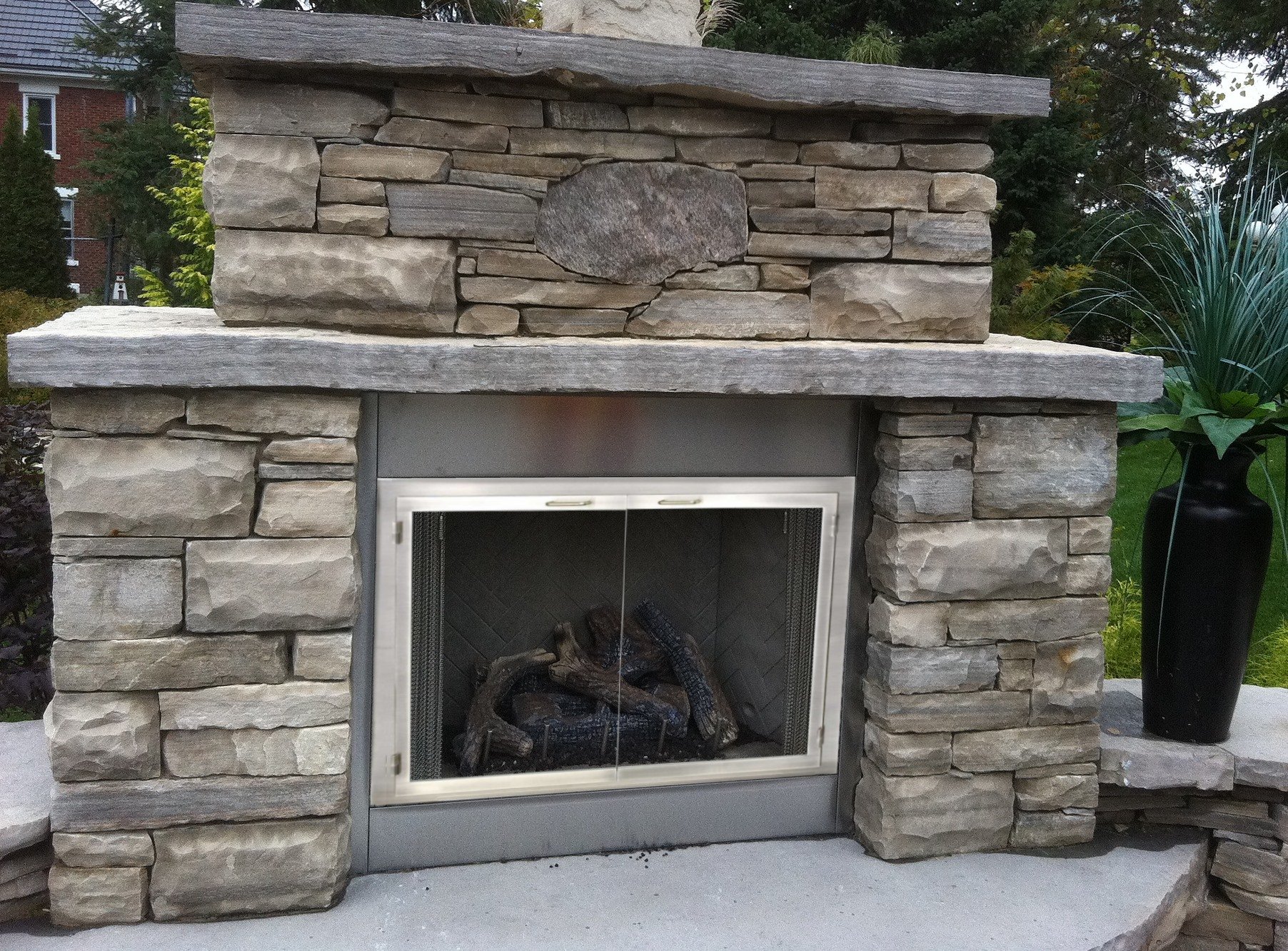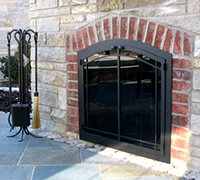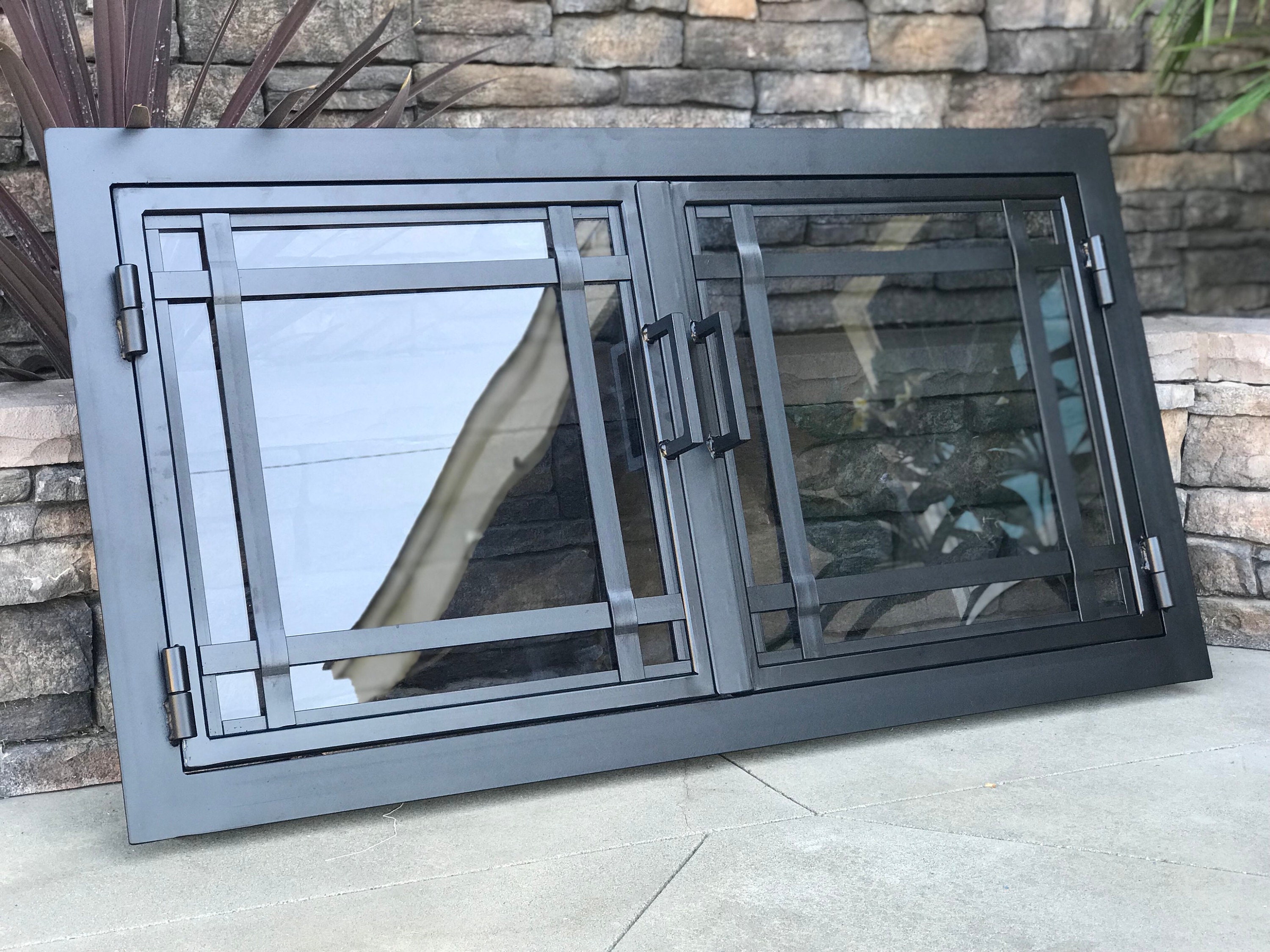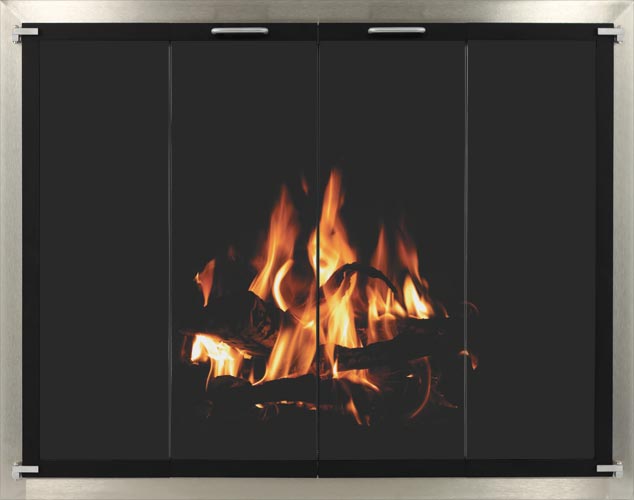Outdoor fireplaces create a warm, inviting atmosphere in backyards and patios, but they require proper protection to function safely and efficiently. Fireplace doors serve as both a practical barrier and a design element, keeping sparks contained while complementing your outdoor decor. From material choices to installation considerations, selecting the right doors ensures years of enjoyment from your outdoor fireplace. Below we examine six key aspects of outdoor fireplace doors to help you make an informed decision.
Choosing the Right Material for Durability
Steel remains the most popular choice for outdoor fireplace doors due to its strength and heat resistance. Powder-coated steel offers extra protection against rust and comes in various colors to match your outdoor decor. Cast iron provides superior durability but requires more maintenance to prevent oxidation in outdoor conditions.
Tempered glass doors allow unobstructed views of the fire while containing sparks. Look for doors with heat-resistant ceramic glass that can withstand temperatures up to 1400°F. Glass panels should have sturdy metal frames to ensure structural integrity during temperature fluctuations common in outdoor settings.
For coastal environments, stainless steel doors resist salt air corrosion better than other metals. Aluminum doors offer lightweight alternatives but may not withstand extreme heat as well as steel or iron. Consider your climate and fireplace usage when selecting materials to ensure long-term performance.
Proper Sizing and Fit Considerations
Accurate measurements are crucial when selecting outdoor fireplace doors. Measure the opening width at the top, middle, and bottom, as masonry fireplaces often have slight variations. Height should be measured from the hearth floor to the top of the opening, noting any irregularities in the brickwork.
Custom-sized doors ensure a perfect fit for non-standard openings. Many manufacturers offer adjustable door frames that accommodate minor size differences. Proper fit prevents heat loss and keeps embers safely contained while maintaining proper airflow for combustion.
Consider clearance requirements for door operation, especially in covered outdoor areas. Swinging doors need adequate space to open fully, while sliding designs work well in tighter spaces. Always verify measurements twice before ordering to avoid costly mistakes.

Ventilation and Airflow Management
Proper ventilation maintains efficient burning and prevents smoke from entering your outdoor living space. Look for doors with adjustable air vents that allow control of oxygen flow to the fire. Some designs feature lower vents that draw in air while upper vents release excess heat.
Glass doors with ventilation systems create a cleaner burn by preheating incoming air. This results in fewer sparks and more complete combustion. Avoid completely sealing your fireplace as this can lead to poor burning performance and dangerous carbon monoxide buildup.
In windy locations, consider doors with wind-resistant features like baffles or directional vents. These help maintain consistent flames despite changing outdoor conditions. Proper ventilation extends burning time and reduces creosote buildup in chimney systems.
Safety Features to Look For
Cool-touch handles prevent burns when adjusting doors during use. Look for designs with insulated grips or heat-resistant materials that remain safe to touch even at high temperatures. Some premium models feature magnetic latches that automatically secure when doors close.
Tempered glass should have safety markings etched in the corner to verify its heat-resistant properties. Doors with tight seals around the glass prevent heat from escaping through gaps. Sturdy hinges and reliable latching mechanisms ensure doors stay securely closed during use.
Spark screens that attach to doors provide an extra layer of protection when the doors are open. Some designs incorporate removable mesh panels that can be used independently of the glass doors. Always check that doors carry appropriate safety certifications for outdoor use.
Style and Aesthetic Considerations
Traditional wrought iron designs complement classic brick or stone fireplaces with their ornamental details. Modern stainless steel frames with clean lines suit contemporary outdoor spaces. Choose finishes that coordinate with other metal elements in your outdoor decor like lighting fixtures or furniture.
Black finishes tend to show less soot buildup over time while maintaining a sophisticated look. Bronze or copper patina finishes develop attractive weathering that enhances rustic designs. Consider how the door style complements your overall outdoor aesthetic for a cohesive appearance.
Glass door options range from completely clear to tinted or patterned varieties. Some feature decorative metalwork that casts interesting shadows when the fire burns. The right style enhances your outdoor ambiance while providing necessary protection.
Maintenance and Care Requirements
Regular cleaning preserves the appearance and function of outdoor fireplace doors. Use specialized glass cleaner for soot removal and mild soap for metal components. Avoid abrasive cleaners that could scratch glass surfaces or damage protective coatings.
Inspect door seals and gaskets annually, replacing any worn components to maintain proper closure. Lubricate hinges with high-temperature grease to prevent sticking. During offseason storage, cover doors to protect them from harsh weather when not in use.
Address rust spots immediately by cleaning and applying touch-up paint to prevent corrosion spread. Check for warping or cracks in glass panels before each use. Proper maintenance extends the life of your investment and ensures continued safety.
Premier View Masonry Fireplace Door Woodland Direct
Stainless Steel Indoor Outdoor Masonry Fireplace Door
Fireplace Doors for Heat N Glo Fireplaces Fireside Hearth u0026 Home
Hand Made Iron Fireplace Doors Custom Made to Fit Your Etsy
Outdoor Fireplace Doors – Hearth And Patio
18 Our Favorite Outdoor Fireplace Gates ideas fireplace gate
Related Posts:


